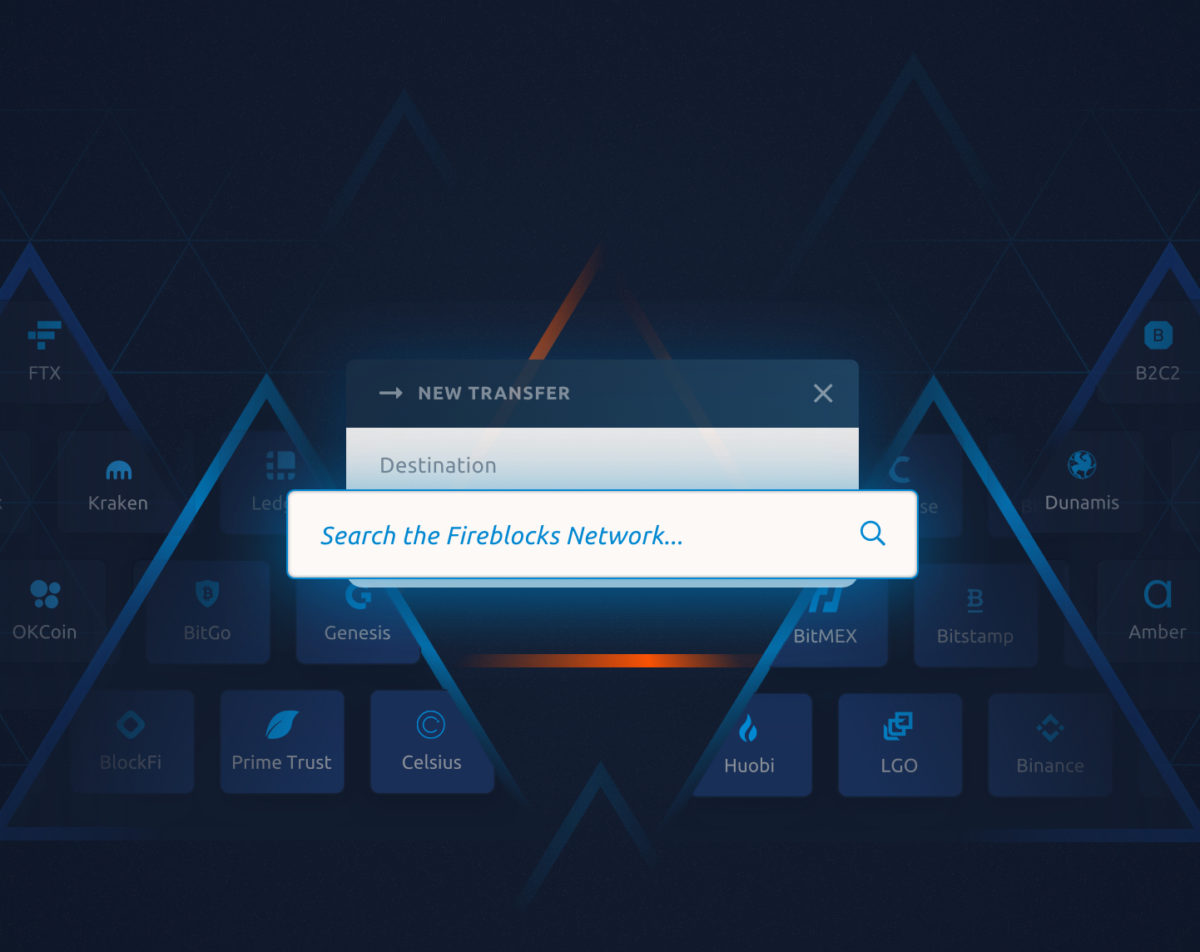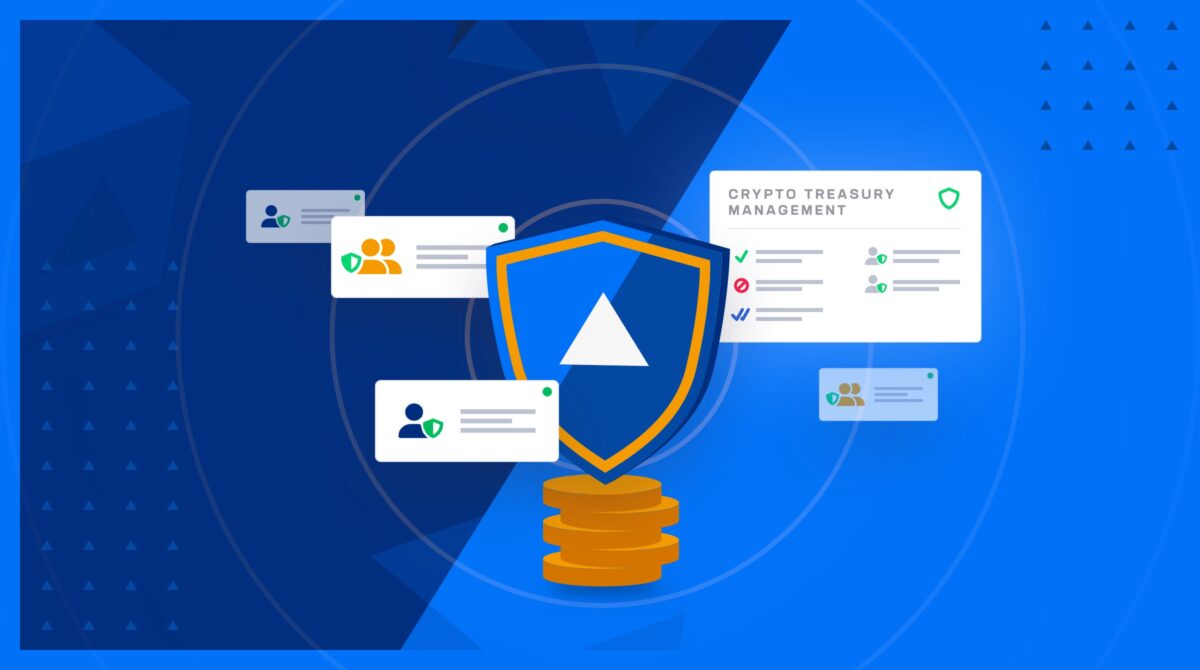Table of Content
What is crypto treasury management?
How is treasury management for crypto different from traditional treasury management?
Benefits of crypto treasury management
Key components of a crypto treasury management system
Crypto treasury management best practices for trading firms and asset managers
Does the future of treasury management require support for crypto assets?
Traditionally, treasury management was limited to certain asset classes. But as emerging asset classes, like cryptocurrency, have risen in popularity and stature, a new type of requirement has appeared: crypto treasury management.
Read on for everything you need to know about crypto treasury management, including how it differs from traditional treasury management, what key components you should look for in a crypto treasury management system, best practices for managing a crypto treasury, and more.
Treasury management involves overseeing all aspects of an organization’s treasury – from liquidity, to banking activities, and so on. On a high level, treasury management is all about diversifying an organization’s financial resources to optimize returns while managing cash flow and minimizing risk.
What is a crypto treasury?
A crypto treasury refers to a collection of digital assets held by an organization. The purpose of a crypto treasury is similar to that of a traditional treasury, which is to manage financial resources to achieve business goals; the primary difference is that digital assets are being managed instead of traditional ones.
Crypto treasuries can create revenue for organizations in a variety of ways, such as:
- Investment in assets that grow in value
- Token rewards for staking
- Generating value from lending and borrowing
What is crypto treasury management?
In general, crypto treasury management refers to the strategic management of cryptocurrencies and digital assets within an organization. It consists of investing in crypto assets to achieve the organization’s financial goals, and the various considerations that come along with that – such as asset allocation choices, risk management, and regulatory concerns.
Compared to traditional treasuries, crypto treasuries come with certain complexities. That’s why some organizations may choose to utilize a management platform to streamline their crypto treasury operations. A crypto treasury management platform offers organizations:
- The ability to hold various kinds of tokens
- A portfolio view of all assets and investments
- Access to markets and investment instruments, such as CeFi and DeFi access
- FIAT on- and off-ramps
- Staking capabilities
- Seamless orchestration, or the ability to movement of assets between the different places they need to be using a single UI or API
- Risk management, including operational risk, compliance risk, and KYT (know-your-transaction) services
How is treasury management for crypto different from traditional treasury management?
Managing a crypto treasury differs significantly from managing a traditional treasury. For one, the actual functionalities required of a crypto treasury management system are quite different from traditional asset management. Additionally, the market conditions of crypto differ from traditional markets; regulatory frameworks also differ greatly between the two categories.
When contrasted with managing traditional cash flows, the management of digital assets requires additional functionalities. These include controlling the movement of assets across multiple blockchains or between various digital asset venues and alternative investment opportunities (such as DeFi and staking), and the ability to interact with and settle with counterparties securely. Given the heightened chances of loss of funds when interacting with crypto assets, putting the right guard rails around any transfer or other type of interaction is extremely important.
In addition, incorporating digital assets into treasury management can come with a degree of volatility. Digital assets are obviously more volatile in nature than certain traditional assets, and this volatility can have various effects on the treasury. For example, gas fee prices vary greatly depending on market conditions. That’s why it’s important to work with a provider that can provide stable service during any market conditions.
When compared with traditional treasury management (which has a well-established regulatory framework), crypto treasuries can also come with a challenging regulatory environment. The traditional finance rulebook is well-defined; on the other hand, regulations are still evolving in the digital asset space, and depending on what regions your organization is working in, they could vary greatly. At the same time, managing crypto and digital assets can mean gaining organizational comfortability with entirely new concepts of asset custody, such as “direct custody” or “self-custody,” (in which a business is the 100% controller and owner of their digital assets), in contrast with traditional finance’s standard of third-party custodians.
Benefits of crypto treasury management
Crypto treasury management (and/or the usage of a comprehensive crypto treasury management platform) can bring a lot of benefits to the table for organizations. Some of these benefits are:
- Increased efficiency. With a strong treasury management platform, organizations can manage day-to-day operations, enforce governance, on/off-ramp crypto, interact with DeFi and Web3 apps, and meet compliance requirements all from one interface.
- Enhanced security. With digital assets, secure key management is mission-critical. The best crypto treasury management platforms use technology like MPC to eliminate a single point of compromise for your organization’s private keys.
- Real time monitoring. Treasury management platforms enable organizations to survey their operations across wallets, trading venues, DeFi, staking, and Web3. It’s important to have visibility on all digital asset treasury operations so that you can track and audit every transaction.
- Improved risk management. A comprehensive treasury management platform provides organizations with the ability to configure granular transaction and user controls to meet governance and risk requirements.
- Access to an audit trail. Detailed reporting is important for any organization managing digital assets, so that internal and external auditors can validate their operations and financials.
Key components of a crypto treasury management system
Crypto treasury management platforms can help organizations streamline every aspect of their digital asset treasury operations. Some of the key components of a strong crypto treasury management system include easy access to liquidity, funding, and extensive risk management tools. Review this chart for a deeper understanding of these key components:
Crypto treasury management best practices for trading firms and asset managers
We’ve gathered an inventory of best practices for crypto treasury management. We recommend these best practices to maximize revenue generation while privileging security and compliance:
- Invest in state-of-the-art technology for secure treasury management. Institutional-grade technology and security protocols that utilize a mixture of multi-party computation (MPC) and hardware security module (HSM) technology are recommended. It’s best to work with a provider that can flexibly offer hot, warm, and/or cold wallet implementations.
- Ensure your crypto treasury management provider has the top security and privacy certifications. Some certifications to look for include CCSS, SOC2 Type II, and ISO.
Providers should have 3rd-party insurance. Insurance should cover assets both in storage and in motion. - Verify your setup is compliant. This could vary from region to region but generally it is important to be able to screen any incoming and outgoing transactions against relevant risks.
- Confirm that you have access to necessary policies and controls from your crypto treasury management platform. You should be able to configure these controls to meet your organization’s specific, custom regulatory and risk requirements.
- Choose a reliable and scalable platform. Consider SLAs, uptime, and support options when looking into crypto treasury management offerings.
Does the future of treasury management require support for crypto assets?
Given the popularity of crypto, some asset managers may be wondering if the future of treasury management requires support for crypto.
The answer to this question is currently unclear – as time goes on, factors such as regulatory developments and market stability will play crucial roles in determining the extent of crypto’s integration into treasury operations.
While it’s unknown what the future holds, crypto is absolutely an asset class that many organizations are trying to manage in their treasuries. As more and more traditional asset classes get tokenized, it’s important to have a treasury management system that can work well with tokenized assets, and support potentially profitable explorations into the digital asset market.
Why choose Fireblocks for crypto treasury management?
Fireblocks provides an easy-to-use crypto treasury management solution that enables organizations to secure their digital assets, manage day-to-day treasury operations, connect to exchanges, access DeFi, and safely interact with trading counterparties.
On a security level, Fireblocks eliminates a single point of private key compromise by combining MPC-CMP and secure hardware enclaves, and is the only CCSS Level III, SOC2 Type II, and ISO 27001, ISO 27017 and ISO 27018 certified platform. At the same time, the Fireblocks Governance and Policy Engine provides the flexibility to configure granular transaction and user controls to meet specific governance and risk requirements.
Fireblocks also offers powerful liquidity management – the Fireblocks Network is the only digital asset transfer network that allows organizations to securely connect with exchanges, DeFi apps, institutional counterparties, and liquidity providers.
All in all, the Fireblocks treasury management platform offers an intuitive interface that enables teams to incorporate crypto into their treasuries safely – with all the tools they need to enforce governance, on/off-ramp crypto, interact securely with DeFi, off-exchange trading with CeFi and meet compliance requirements.
Conclusion
Managing a treasury with crypto assets can be a complex exercise. Choosing the right crypto treasury management provider can make the difference between crypto being a risk and a large potential cost for the company, versus a powerful initiative that can drive efficiency and value.



